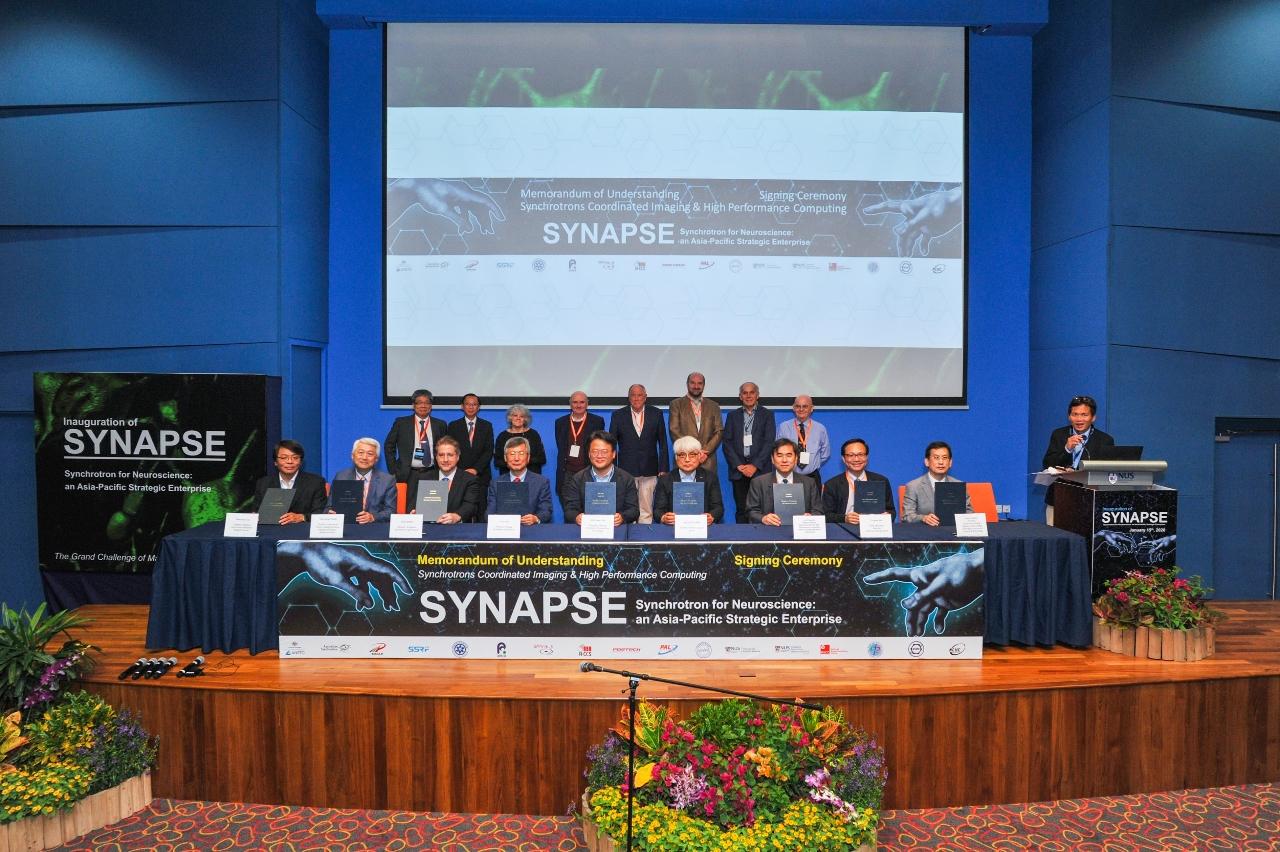A new strategy using powerful x-ray technologies and advanced computational techniques will provide a clear and detailed picture of the human brain and allow more effective treatments of brain diseases.
Singapore, 15 January 2020 ¾ Scientists from Taiwan initiated an international coalition that will produce the first comprehensive map of the neuron network of a human brain, with ultra-high resolution and in three dimensions. The coalition now grows to a network involves over 1,000 researchers from Singapore, Australia, China, Japan, Korea and Taiwan. The team will use synchrotrons – extremely powerful x-ray sources – to trace the complex and intricate structure of the brain.
Professor Yeu-Kuang Hwu from the Institute of Physics, Academia Sinica and Professor Ann-Shyn Chian lead the team from Taiwan will directly work with the National Synchrotron Radiation Research Center (NSRRC) on constructing the map of the human brain. Taiwan will also coordinate the data management for this endeavor. The coalition will link six synchrotron facilities in the Asia-Pacific area, under a collaboration called “Synchrotron for Neuroscience – an Asia Pacific Strategic Enterprise” – in short, SYNAPSE. Formally inaugurating SYNAPSE at the Singapore today, the founding members will sign today a Memorandum of Understanding (MOU) committing them to work together to complete the first human brain map by 2023.
Faster, crystal clear images of the brain
Each of the participating facilities will work on a portion of the same brain. Using synchrotron x-rays, they will image the brain network on a scale of 0.3 micrometers, with an image taking speed of 1 cubic millimeter per minute. The overall data acquisition and processing speed is more than 10 times faster than any other present method with comparable resolution, (such as super-resolution visible light microscopy or electron microscopy). Professor Hwu estimates that it will take the SYNAPSE collaboration about four years to map a human brain; other methods would require instead more than a person’s lifetime.
In parallel to the charting of the first whole brain circuitry map of human brain neural network with x-ray microtomography, SYNAPSE will complement the structural map constructed with subcellular and molecular information from other advanced imaging techniques such as x-ray nanotomography, infrared spectromicroscopy, super-resolution visible-light three-dimensional microscopy and cryo-electron tomography. This coordinated approach will provide ultra-small structural details of the entire brain, analogous to the detailed features of Google Earth images. By contrast, other current maps of the human brain can deal only with certain specific parts.
SYNAPSE will enhance the understanding of the structure of the brain and the composition of its various structures clarifying the normal brain functions and helping to identify the causes of brain diseases.
As mapping a human brain will generate a huge amount of data, a second MOU will be signed today by the SYNAPSE members to implement a High Performance Computing network to rapidly process, store, mobilize, access, and analyze such data. Taiwan, through the National Center for High Performance Computing Centre (NCHC), will be one of the key data hub of SYNAPSE. It will specifically take advantage of the recently implemented Taiwania high-performance computers and the high speed international network linking to other SYNAPSE partners.
“Globally, brain mapping has gained impetus due to growing impact of brain diseases. What we are setting out to do is a world first enterprise. The images captured by SYNAPSE with unprecedented speed, clarity and granularity will form an extensive human brain map showing how neurons are connected and how they interact to result in cognition and intelligence. Our findings could potentially contribute to effective treatment for increasingly important neurodegenerative pathologies such as the Alzheimer disease and other forms of dementia” -- stated Professor Low.
An International Advisory Board (IAB) including experts from neuropathology, electrophysiology, cell biological approaches and imaging has also been established to support SYNAPSE and guarantee its scientific excellence.
Present at the MOUs signing ceremony and launch of SYNAPSE were Nobel laureates Professor Kurt Wüthrich and Professor Ada Yonath, who spoke about Reflections on the SYNAPSE Project and Next generation antibiotics.
The Taiwan research team, led by Professor Yeu-Kuang Hwu of Institute of Physics, Academia Sinica and Professor Ann-Shyn Chiang, National Tsing Hua University, initiated the human brain mapping project was supported by MOST since 2003 through a series of project aiming to develop higher resolution and higher speed x-ray imaging technology and its application in biomedical research. These projects include National Program for Nanoscience and Nanotechnology, and the Advanced Research Center led by Professor Ann-Shyn Chiang. The continuous support of MOST, before any of the high impact applications of these advance x-ray technologies emerges, is the key allowing the research team to build the substantial technology advantage over the world competition. The technology leadership in turn convince and attract those other synchrotron facilities to come to work on the common objective.
Media Contact
Professor YeuKuang Hwu
Institute of Physics, Academia Sinica
Phone: 886-2-27896721, 886-936118133
E-mail:phhwu@sinica.edu.tw
